Recent Articles
Popular Makes
Body Types
2018 Jeep Grand Cherokee Trackhawk Review
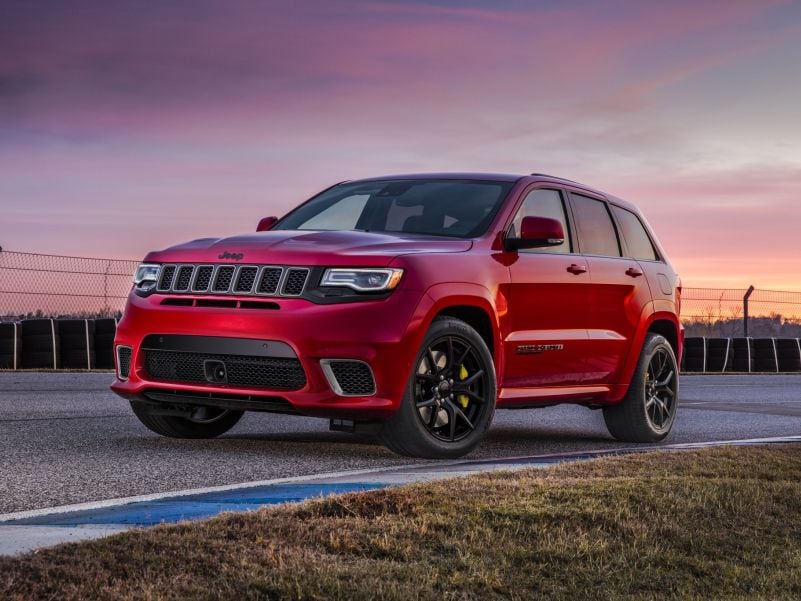
2018 Jeep Grand C Cherokee Trackhawk 001
In the department of historical irony: In 1941, the original military Jeep joined the U.S. Army propelled by the “Go Devil” engine. A 2.2-liter flathead four-cylinder, the Go Devil was rated for 60 horsepower at 4000 rpm and 105 pound-feet of torque at 2000. Allied with a three-speed manual transmission and part-time four-wheel drive, the wartime Jeep was capable of 65 mph max. More important, its durability became legendary, as did its versatility.
Fast forward to 2017: Jeep has renewed its fire-and-brimstone connection with a Grand Cherokee propelled by the formidable Hellcat V8. To understate the case, the $86,995 Grand Cherokee Trackhawk’s Hellcat brings a bit more to the game than the 1941 Go Devil.
Supercharged Hellcat Powerplant
As in its passenger car applications (the Dodge Challenger coupe and Charger sedan), the supercharged Hellcat huffs up 707 horsepower at 6000 rpm.
Meanwhile, torque is rated for 645 pound-feet at 4800 rpm — down 5 lb-ft from its Dodge output. Among other mechanical adjustments, engineering team was forced to design new exhaust manifolds to get the Hellcat and associated hardware into the Grand Cherokee engine bay, diluting torque a smidge.
Will anyone notice the torque disparity? What do you think?
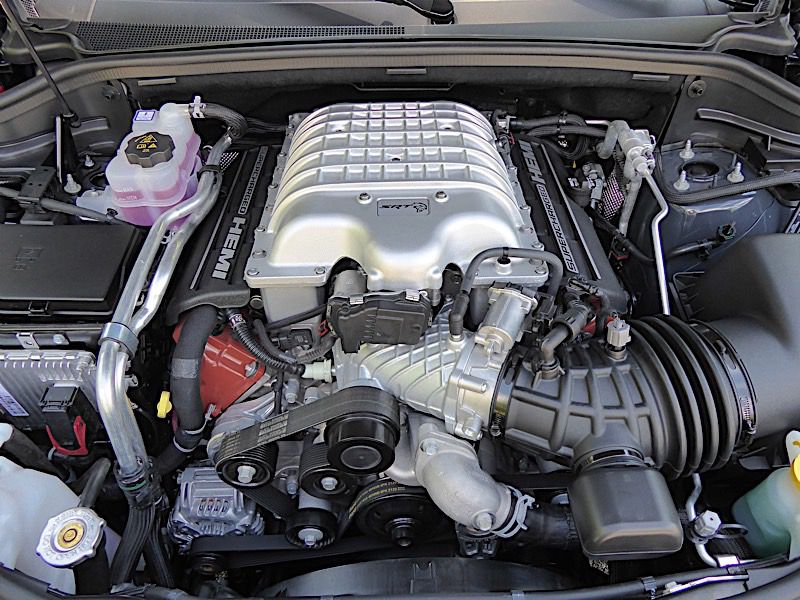
Photo by Ron Sessions
Muscle and Mass
In addition to more power, “more” also applies to the Trackhawk’s curb weight: 5,363 pounds, according to Jeep. That’s a load, but of course the Hellcat engine makes light of all that mass. Engage the launch control and the Trackhawk hunkers down and sprints to 60 mph in 3.5 seconds.
Ordinary words seem pallid in describing this experience. Visceral, yes. But does visceral really convey the sensation of having your internal works jammed against your spine? Eyeballs seem to flatten. Facial features distort. And in the time it takes to say “omigod!” you’re past 60 mph and well on your way to 100.
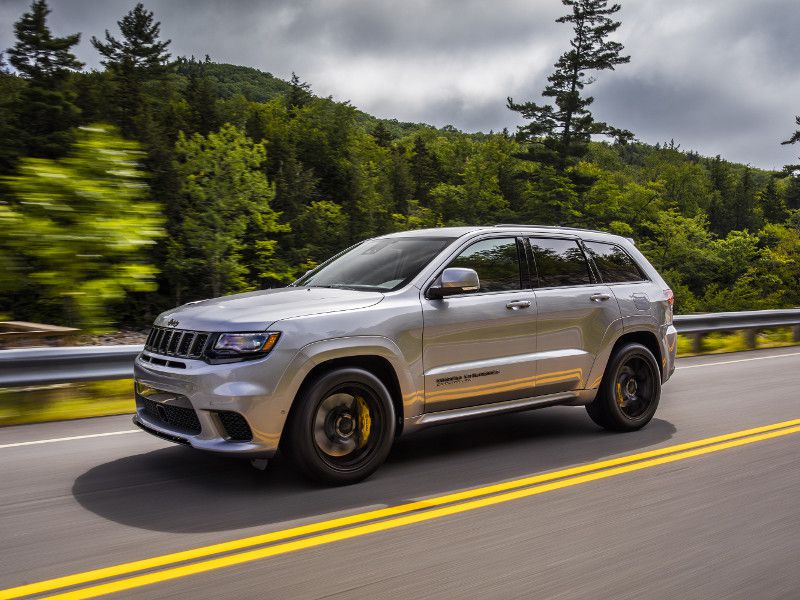
Photo by Fiat Chrysler Automobiles
A More Effective Launch
Full-time four-wheel drive — Jeep’s Selec-Trac system — is standard equipment, of course, and this gives the Trackhawk a getaway advantage over the rear-wheel drive Challenger and Charger Hellcats. Although the Grand Cherokee Hellcat outweighs its passenger-car counterparts by about 900 pounds, its launch control is more effective, and all four tires hook up without a trace of wheelspin.
The result: For all its mass, the Trackhawk is actually a wink quicker to 60, as well as the quarter-mile. Jeep predicts 11.6 seconds for the quarter, and having experienced the launch control rush, we have no reason to doubt this. Nor do we doubt the 180-mph top speed claim.
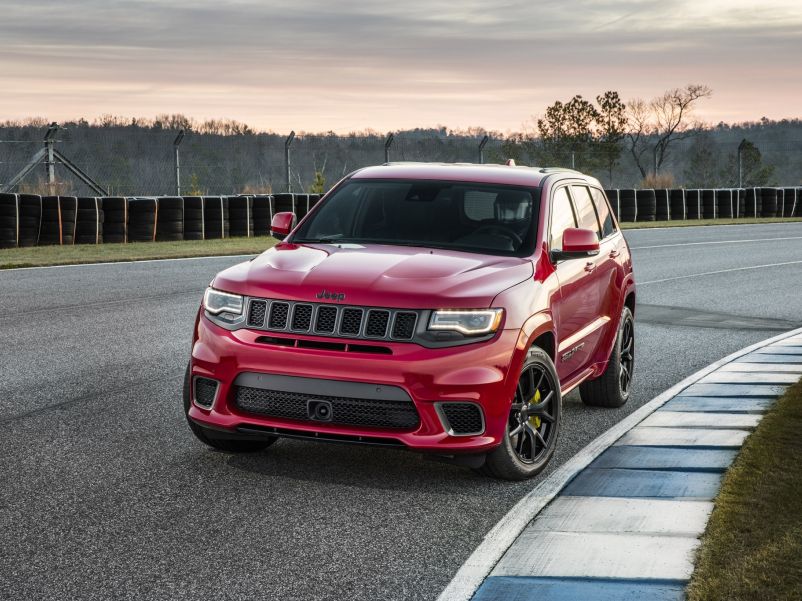
And It Can Dance
In a rarefied (and pricey) market segment dominated by European super SUVs — the BMW X5M and X6M, Land Rover Sport SVR, Mercedes GLE 63 AMG and Porsche Cayenne Turbo S — a contender for the heavyweight championship has to deliver more than rocket sled acceleration. Thus the Trackhawk is just as impressive negotiating the twists and turns of a road racing circuit as it is on a dragstrip.
The Trackhawk offers five operating modes — Auto (as in default), Tow, Snow, Sport (firmer suspension, quicker shifts) and Track (even firmer suspension, instantaneous shifting and launch control).
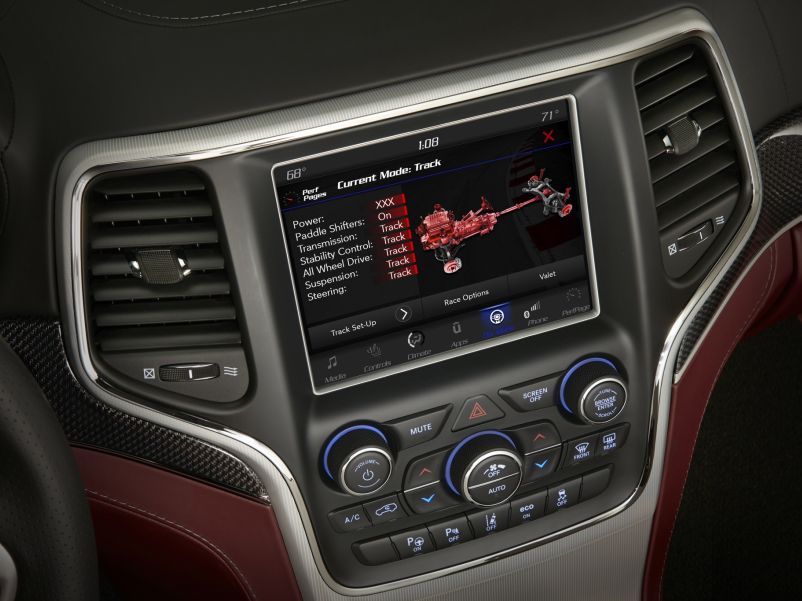
Photo by Fiat Chrysler Automobiles
A Few Hot Laps
We did a few laps at Club Motorsports, a beautiful new mountainside road racing circuit in New Hampshire, and were suitably impressed by the way the Trackhawk’s power flattened out this hilly track, which includes 250 feet of total elevation change.
More impressive was how well the Track mode suspension setting managed the Trackhawk’s substantial bulk. The big Jeep stays level in hard cornering — virtually no body roll — which makes it seem almost agile in quick transition.
A fair percentage of the Trackhawk’s mass is on the front axle, and understeer is its inevitable consequence. But it takes a pretty lofty velocity to provoke really serious understeer, and while it’s impossible to forget that you’re shepherding well over two tons of powerful SUV, there are no unpleasant dynamic surprises.

More Impressive Elements
Another impressive element — almost as impressive as the Hellcat’s vast thrust — is the Trackhawk’s braking power. The Brembo system features huge rotors (15.75 inches up front, 13.78 inches in the rear), the biggest in any FCA vehicle. Jeep claims the system can bring the Trackhawk to a halt from 60 mph in a phenomenal sports-car-like 114 feet.
Other elements of the Trackhawk’s dynamic scorecard rate as good but not exceptional. Ride quality, for example, is civilized in standard and snow modes, firmer in Sport and hard-edged in Track. The steering is a little slow but it’s more communicative than many systems, particularly at higher speeds.
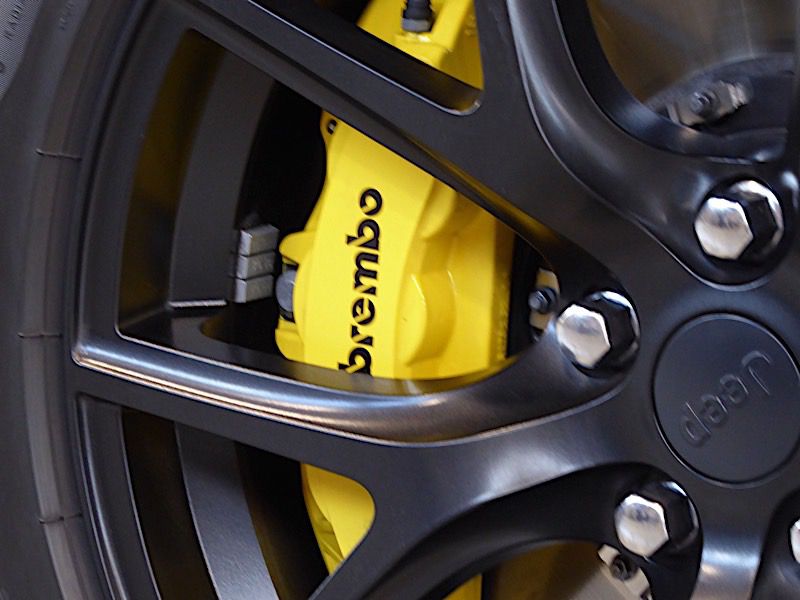
Photo by Ron Sessions
Well Appointed Interior
Interior noise levels are low until the throttle is wide open in Sport or Track modes, whereupon the exhaust emits an authoritative bark. For most, this will be just fine, although some reports have complained that there’s not as much supercharger whine in this version of the Hellcat as in the Charger and Challenger. We think Trackhawk owners will get over it.
As you’d expect at this price level, the interior is well appointed, with contemporary connectivity and infotainment, including a Performance Pages readout that allows the driver to track a wide range of go-faster data.
If there’s any fault to be found inside, it’s bucket seats that don’t offer quite as much lateral support as the driver might like in vigorous track use.
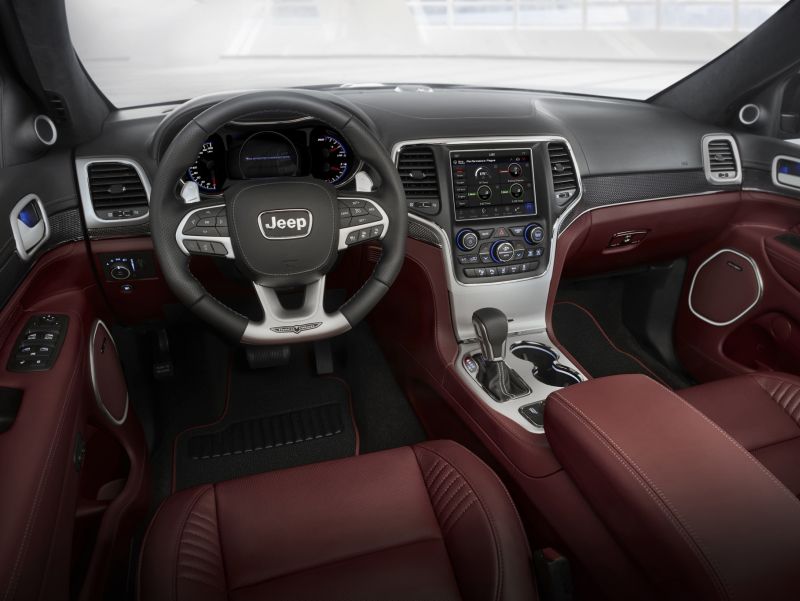
Photo by Fiat Chrysler Automobiles
Subtle Super Ute
Outside, there is little to distinguish the Trackhawk from other Grand Cherokees. The front fog lights have been sacrificed to get more cool air to the supercharger, but the only cosmetic element that jumps out is the yellow brake calipers. No wings, no spoilers, no splitters, no fender flares. Understated, but incredibly potent.
The Trackhawk isn’t exactly without precedent. Jeep began offering SRT (Street and Racing Technology) Grand Cherokees powered by a 475-hp 6.4-liter “Hemi” V8 beginning in 2006, and the SRT version will continue in the lineup.
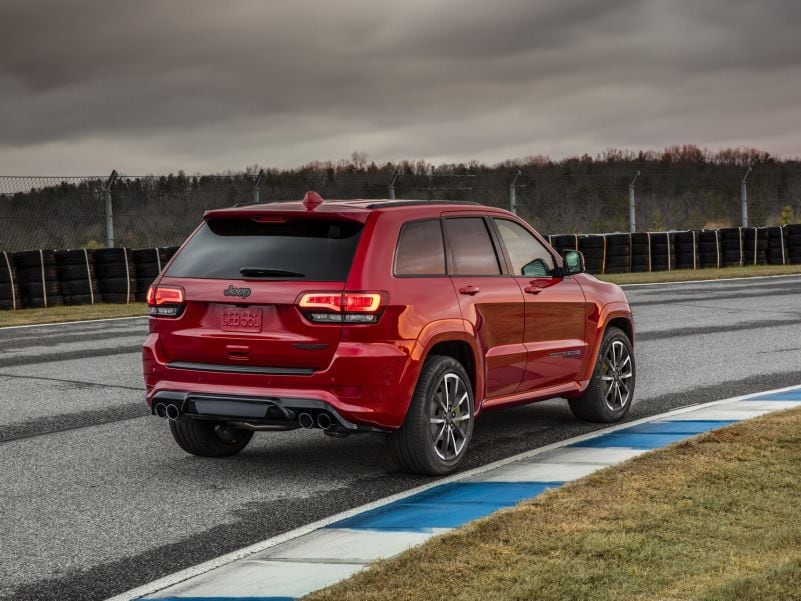
Smoke the Euro Hot Rods
But the Hellcat takes Grand Cherokee performance to a whole new level. It also takes Grand Cherokee pricing to a new plateau. Add enough options and the price surpasses $100,000, the most expensive Jeep ever.
On the other hand, pricing for every one of the high performance vehicles in the Trackhawk’s target market starts at more than $100,000 — and the Trackhawk will just flat smoke any of ’em. It’s civilized enough for daily use, yet extraordinary all-around performance just a toe tap away. In a game dominated by Euro hot rods, the new champ is an all-American.
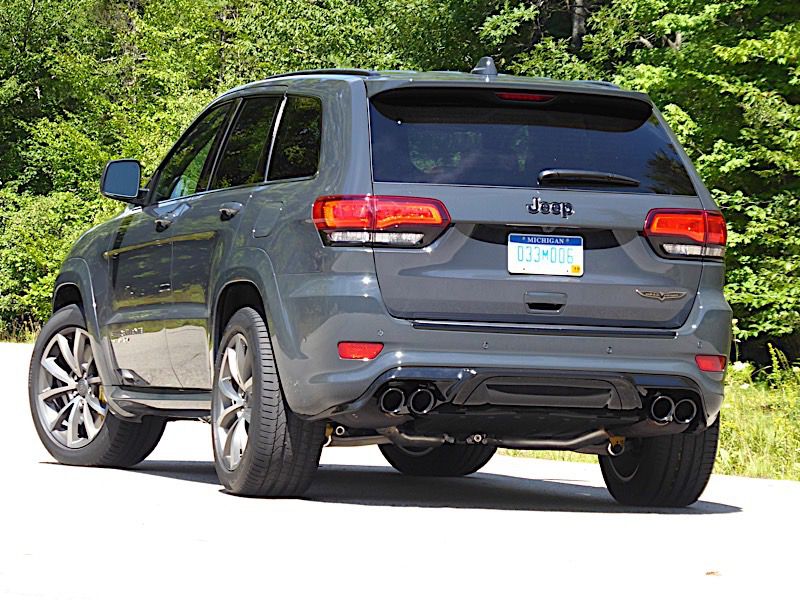
Photo by Ron Sessions